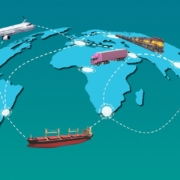Lenovo’s European Manufacturing Base: Fortifying Supply Chain Resilience
2023 Lenovo ISG Analyst Summit; Budapest, Hungary; June 13-14, 2023 — During the two-day 2023 Lenovo ISG Analyst Summit, Lenovo executives detailed the company’s performance and progress across multiple strategic initiatives. Lenovo has been diversifying aggressively, filling portfolio capability gaps by acquiring assets such as PCCW Solutions and creating strategic partnerships such as with NetApp (Nasdaq: NTAP) and WEKA. In a way, this event was recognition of Lenovo’s progress in transitioning from a one-product hardware company to a broad-spectrum IT solutions and services provider. Additionally, to celebrate the first anniversary of the factory opening in Ullo, Hungary, Lenovo provided a tour of the facility to show the operating environment and capabilities. The event concluded with multiple topic-specific one-on-one discussions with Lenovo executives.
Diversification and Expansion: Lenovo’s Journey Beyond PCs
From a global perspective, PCs continue to be the product most strongly associated with the Lenovo brand, and for good reason: The company is the No. 1 PC vendor in the world in unit sales. However, Lenovo has been quietly diversifying its business through a push into the IT infrastructure market, which started nearly a decade ago with the acquisition of IBM’s (NYSE: IBM) x86 server business and the formation of the Infrastructure Solutions Group (ISG).
Since then, Lenovo has continued to gradually scale the business and invest in further developing a robust portfolio of offerings by entering markets such as storage, high-performance compute and hyperconverged infrastructure. And more recently, the company has started to compete in the Hardware as a Service market, which represents the next evolutionary stage of hardware companies, as well as in new markets emerging from increased adoption of next-generation technology such as 5G, edge and AI.
TBR Perspective: 2023 Analyst Summit Highlights Record-breaking Fiscal Performance for ISG
ISG President Kirk Skaugen opened the 2023 Lenovo ISG Analyst Summit with an overview of ISG’s progress during its fiscal 2022-2023, including 61 new business unit revenue records, such as generating nearly $10 billion in revenue. Additionally, ISG’s year-to-year growth accelerated in every quarter of the fiscal year, highlighting the group’s successful portfolio strategy and strong execution. As Skaugen dug into segment details, the performance trends were outstanding.
- ISG grew its server business at nearly double the rate of the market. Skaugen’s messaging around ISG’s server portfolio focused primarily on its reliability compared to x86 peers. TBR believes Lenovo is making the right play to message reliability as a product differentiator as customers are decreasingly focused on the hardware due to product commoditization. Skaugen also added that of the 1% of Lenovo ThinkSystem servers with unplanned downtimes of more than four hours on an annual basis — the measure of reliability used for the market benchmark — only 2% of those incidents were caused by cybersecurity-related events. With two major customer focuses being cybersecurity and total cost of ownership of the data center, this was a key selling point.
- ISG’s storage segment was the star of the show for the full fiscal year, with 208% growth due to its strategy of targeting the entry-level storage domain. This hypergrowth also led to Lenovo becoming the fourth-largest storage vendor in TBR’s 4Q22 IT Infrastructure Benchmark. Lenovo’s strategic alliance with NetApp in hardware codevelopment and move into higher price bands also aided Lenovo’s performance in the storage space. Additionally, Lenovo’s recent alliance with WEKA in storage software helps the company capture market opportunity for higher-performance workloads. Overall, while this degree of hypergrowth only materializes off a small revenue base, it is a clear indication of ISG’s market resonance, strategic positioning and high-level execution amid Juxtapose this performance with that of Lenovo’s peers and the high-level picture becomes clearer: Lenovo is gaining share in the IT infrastructure market.
While not covered at the event, it should be noted that if there is an area where ISG struggles, it is profitability. FY2022-2023 represented ISG’s first cumulatively profitable year, with an operating margin of 1.0%, indicating that the current scale of the business is marginally overcoming the overhead.
Due to the nature of its ODM+ business and the trend in higher demand growth from cloud service providers (CSPs) compared to the enterprise, ISG will likely never be as profitable as its OEM peers. ISG’s profitability potential will largely be driven by using the revenue contribution of the margin-accretive Enterprise & Small and Medium Business (ESMB) segment as a lever. As such, TBR expects ISG to sustain low positive margins while prioritizing growth and looking for opportunity creation synergies with Lenovo’s services arm, the Solutions and Services Group, to generate substantial profit.
Watch Now – Navigating Soft Demand and Margin Erosion: Insights Into Devices’ Vendors 2022 Revenue Challenges
ODM+ Strategy Is Paying Dividends as Premium-to-market Growth Is Achieved
There are many angles from which to view ISG’s performance in the broader context of IT infrastructure market growth with consideration of the dynamic between public cloud and ODMs versus OEMs. This is precisely where to look for Lenovo’s differentiation.
As public cloud rose in popularity over the past two decades due to numerous advantages over traditional IT infrastructure procurement and operations, such as ease of use, scalability, agility, software ecosystem and financial flexibility, the demand for IT infrastructure began to shift from traditional OEMs to cloud providers. Public cloud was particularly disruptive in that it dramatically lowered the overhead requirements for SMBs, while enterprises still benefit greatly from the agile deployment and scalability, leading to a paradigm shift in IT infrastructure consumption.
ODMs, which design and manufacture custom infrastructure, found themselves uniquely positioned to take on the requests of these hyperscalers to produce low-cost hardware, which carries lower margins but in massive volume. OEMs, whose bread-and-butter go-to-market strategy was serving the enterprise market, found themselves increasingly cut out of the transaction and opportunity. This has been an overarching trend in the industry for years and is largely the driving force behind the strategic directions in which OEMs are headed — toward hybrid, multicloud environments and IT Infrastructure as a Service.
With the DNA of a PC manufacturing company, Lenovo decided in 2018 to apply the supply chain and manufacturing expertise cultivated from the logistical challenges of being a PC manufacturer to its IT infrastructure business, ISG. Lenovo calls this verticalization initiative and business model ODM+, with the plus symbol signifying the company straddling the identity of an ODM and OEM while differentiating itself from a traditional ODM.
ODM services, such as fully customizable infrastructure designs down to the motherboard and manufacturing at scale, differentiate ODM+ from OEMs. But how does Lenovo differentiate ODM+ from ODMs? The answer is twofold:
- Lenovo’s scale of procurement — The volume at which Lenovo makes purchases as a customer of component vendors (g., Lenovo is Intel’s second-largest customer) gives the company purchasing power and priority when it comes to important components. This is a major reason why Lenovo has not spun off its IT infrastructure business from the PC business despite the negative top-line optics that exposure to PC market and consumer volatility can present.
- The strength of Lenovo’s supply chain — Lenovo’s supply chain reaches 180 countries. The company’s global reach provides customers with confidence in its ability to deliver its product reliably, which is a valuable selling point now that customers have ubiquitously experienced the extent to which disrupted supply chains can affect their businesses.
Ullo Factory Tour
On Day 1 of the summit, Lenovo brought invited analysts to its Ullo factory, located one hour from the heart of Budapest. At 500,000 square feet, or approximately the area of seven soccer fields, the size of the manufacturing facility in Hungary is impressive. But compared to Lenovo’s two mega factories in China, which are approximately five to seven times that size, it can oddly be considered small by Lenovo standards. For TBR, the Ullo factory tour boils down to three key takeaways.
Lenovo’s Operational Adaptability and Customer Trust
Lenovo began construction of the Ullo factory in August 2020, and despite the disruption of the COVID-19 pandemic, the facility was in production by July 2021 — an incredible turnaround time. Just under two years later, the factory is fully operational, employing over 1,000 workers and supplying the vast majority of Lenovo’s IT infrastructure across EMEA, with over 1 million units shipped.
A common thread across conversations regarding Lenovo’s conduct during the pandemic was that the company managed to build trust with customers by setting pragmatic timelines, being adaptable and meeting deadlines. DreamWorks executives echoed these beliefs during Lenovo and DreamWorks Animation Media Analyst Day, emphasizing Lenovo’s willingness and ability to respond to requests and navigate disruptions. Both examples reflect Lenovo’s organizational style, which is characterized by the company’s adaptability, decisive action and fast operational pace.
Automation Is a Challenge but also Represents an Opportunity
A key observation during the factory tour was the lack of automation. This characteristic is double-edged as it indicates the difficulty of automating Lenovo’s manufacturing process but also means the facility has strong potential to increase efficiency and output as it gradually introduces more automation. The difficulty in implementing automation lies in Lenovo’s willingness to accommodate customizability in its standard offerings, which causes configuration variability in each order.
Although the concept of ODM+ revolves around full hardware customization, down to the component level, this business model represents automation potential because after the initial customization uplift, cost efficiencies can be realized with volume. As such, ODM+ deals with next-wave CSPs in EMEA may provide an opportunity for Lenovo to lower operating costs.
An EMEA-based Factory Strengthens Lenovo’s Supply Chain
An extremely high proportion of Lenovo’s EMEA IT infrastructure is now assembled at the Ullo factory. Previously, the supply of IT infrastructure to the EMEA market came from Lenovo’s manufacturing facilities in China.
While a portion of components will likely still be sourced from China, the assembly and distribution of finished products to end customers originates from a geographically central location — Hungary — which TBR believes will impact Lenovo in at least three ways:
- The factory will lower logistics costs by reducing the end-product distribution distance and subsequently shifting the allocation of transport usage away from air freight, which is among the costliest methods of transport.
- Similarly, the facility’s closer proximity to customers will reduce outbound logistics emissions and increase utilization of cleaner ground transport, both of which will reduce Lenovo’s Scope 3 emissions. This may help Lenovo achieve its internal environmental, social and governance goal to reduce Scope 3 greenhouse gas emissions by 25% by FY2029-2030.
- The diversification of the EMEA-based factory’s manufacturing and distribution hubs will provide operational resilience in Lenovo’s supply chain. Lenovo wants to avoid disruptions such as the 1Q22 lockdowns imposed across China, notably in Shenzhen. The city is a major manufacturing and distribution hub for Lenovo, and the lockdowns caused factory output to drop dramatically, in addition to limiting the volume of goods Lenovo could deliver during the quarter, ultimately leading to a 12% year-to-year decline in ISG revenue for that
Conclusion
ISG is making waves in the IT infrastructure industry with a sound strategy to capitalize on the mistakes of incumbent vendors and take share. On top of its product development strategy, ISG is creating differentiation from peers through the verticalization of its operations in manufacturing and design and the supply chain, which will not only provide a unique selling point across its entire portfolio but also result in higher cost and margin leverage. In core markets, ISG is well positioned and has messaged its solutions intelligently thus far.
Sustained success in the midterm will be determined by whether Lenovo can continue to match market needs and create compelling differentiation in a commoditized market. In the longer term, the company’s relevancy in emerging markets such as hybrid cloud, edge and AI will be an important determinant of success. TBR believes that with Lenovo’s 2023 announcements around edge and AI progress, which includes reaching $2 billion in AI revenue on an annual basis, committing $1 billion to AI investment and developing its AI infrastructure portfolio, the company is taking steps in the right direction.




Lenovo ISG is building the road map to become a market-leading infrastructure provider
/by Angela Lambert, Principal Analyst and Practice ManagerLenovo is executing on strategies across all segments within ISG to become the world’s largest IT infrastructure provider.